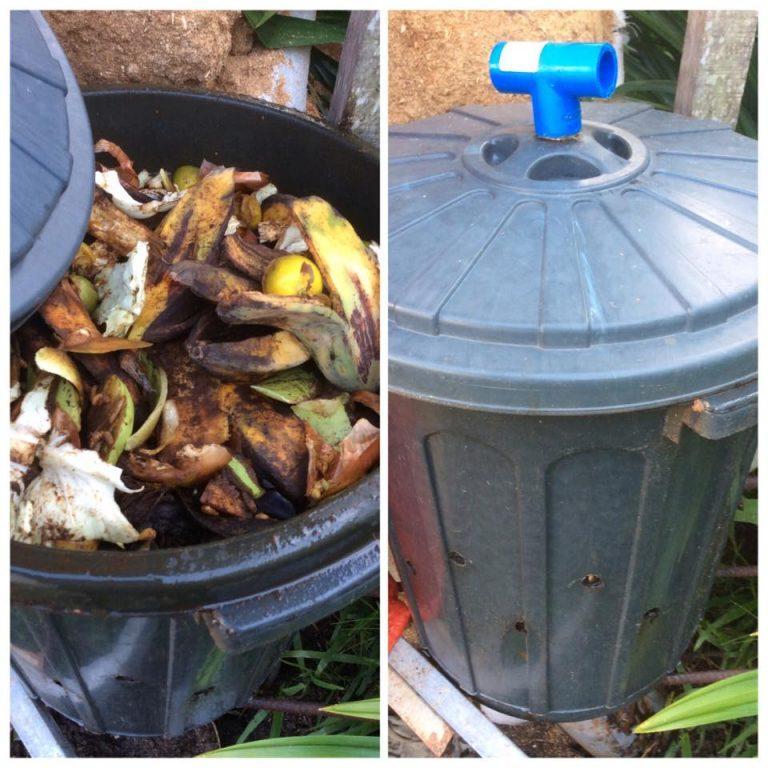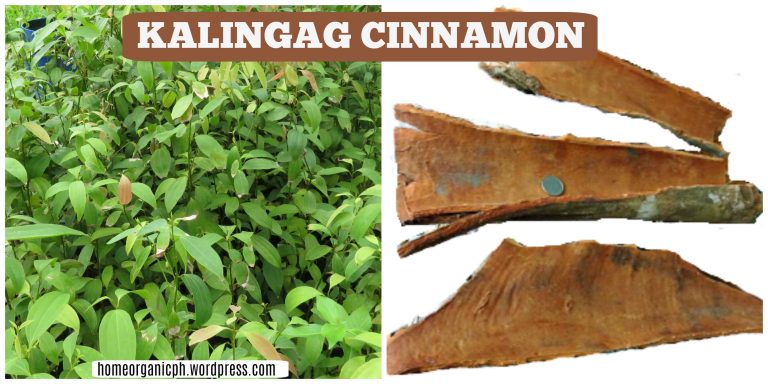Turmeric Root For Us
I prepared turmeric root tea to show my 9-year old daughter one way to enjoy turmeric root. This harvest is from my plant. I gave her rhizomes and taught her how to plant it. You see, aside from planting turmeric, she also prepared the garden soil and watered her plant everyday. “I’m so proud of myself!”, she declared when leaves of her plants sprang (below). I’m glad that I helped her gain that feeling and achievement.

What is turmeric?
Turmeric (Curcuma longa) is a member of the Zingiberaceae family which also includes ginger, cardamom, and galangal, according to the University of Florida Institute of Food and Agricultural Sciences (UF IFAS). The turmeric plant grows to three feet and has oblong, dark green leaves that are about five inches wide. The flowers are yellow-white, growing on a spike-like stalk, they added.
Below is a picture of the turmeric plant from my organic garden. Many may not have seen this, as we usually only see packaged turmeric powder. I initially planted my turmeric in plastic bag, but eventually, the bag disintegrated, and turmeric took root in the ground.
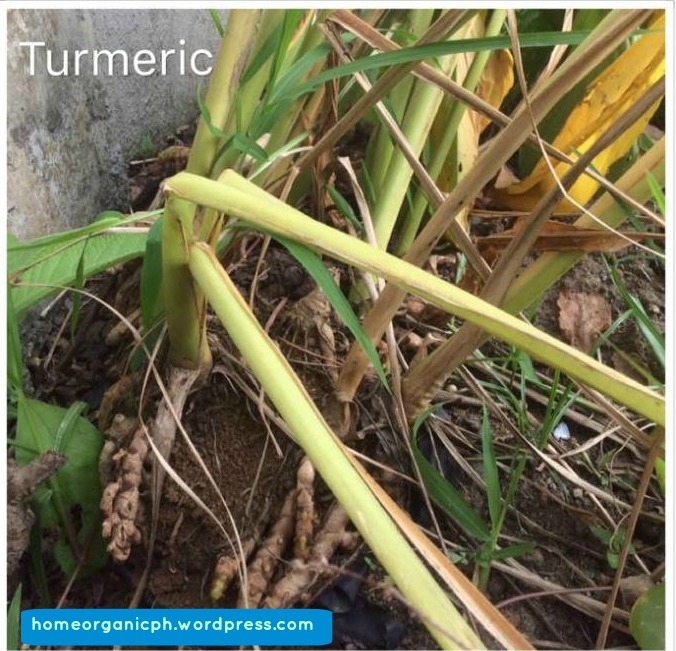
What we actually use is the turmeric rhizome (not the roots), which is actually its underground stem. The picture below shows the rhizome and roots.
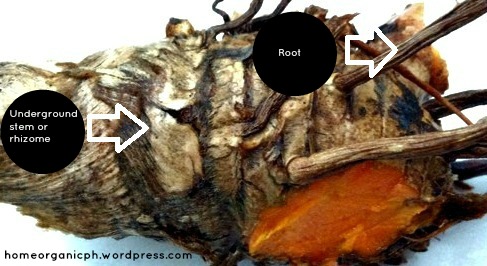
I intentionally labelled the article image as “root” instead of “rhizome” because this is what is familiar to many. At the same time, I used turmeric root here to refer to turmeric rhizome.
In the Philippines, turmeric is known as “luyang dilaw” (Tagalog), “kalawag” (Visayan), and 20 other names. I’m familiar with the first two terms as I speak those languages. Here are turmeric’s names in the Philippines, according to the Philippine Traditional Knowledge Digital Library on Health:
-
- Tanmanan
-
- Dilaw (Tagalog)
-
- Duwaw (Cebu)
-
- Angay (Pampango)
-
- Pangar (Pampango)
-
- Pangas (Pampango)
-
- Dulaw (Visayan)
-
- Kalabaga (Visayan)
-
- Kinamboy (Visayan)
-
- Kinamboi (Visayan)
-
- Kulalo (Visayan)
-
- Kulyaw (Ilocano)
-
- Kunig (Ilocano)
-
- Kunik (Ibanag)
-
- Lampuyang (Visayan)
-
- Lawag
-
- Parak
-
- Salampawyan / Salampauyan
-
- Kapayas (Misamis Oriental)
-
- Duao (Bohol)
-
- Tamaylan (Camarines Sur)
-
- Langkawas (Masbate)
-
- Kunig (Nueva Viscaya)
-
- Hama’a (Batanes)
-
- Giligili (Maguindanao)
-
- Kalamaog (Maguindanao)
- Tigwas (Maguindanao)
Turmeric is so widely used in the Philippines that there’s even a festival for it. “Luyang Dilaw Festival” (literally, Turmeric Festival) is celebrated every May 2 in Marilao, Bulacan, the Philippines.
What are the turmeric benefits?
The National Center for Biotechnology Information (NCBI, which is part of the United States National Library of Medicine, a branch of the National Institutes of Health) wrote that “turmeric is a potent antioxidant, anti-inflammatory, antimutagenic, antimicrobial, and anticancer agent”.
For a deeper understanding of the medical benefits of turmeric root, please see details in Table 13.3 on “In Vitro Effects of Turmeric against Various Diseases/Disorders” published by NCBI.
Incidentally, my daughter was not feeling so well one evening. I prepared fresh turmeric root tea right away, and made her drink it. I also made her drink some the next day. She felt better in the morning.
How to plant turmeric
It is very easy to plant turmeric, and if you’re in a tropical country like the Philippines, it’s even so much more easy. Here’s what we did for our turmeric organic gardening:
-
- We chose a site where it is partly shaded and not flooded.
-
- We prepared the garden soil by using 2 parts saw dust, 1 part top soil, 1 part worm castings or vermicompost (vermicast), and 1 part rice hull ash. (Do check out how to make your own worm castings and one way how we make your own healthy garden soil.)
-
- We used roots (rhizomes) with protruding buds.
-
- Dig about 2 inches deep, and insert the rhizome with bud facing up. Cover with garden soil, and water lightly.
-
- Leaves grow out after 1-2 weeks.
-
- Just keep on watering daily.
- You may harvest roots when they start showing on the ground.
I planted my turmeric around 3-4 years ago. The leaves died when the roots (rhizomes) were ready to be harvested. In my case, I didn’t harvest all turmeric roots, but I decided to just store them in the soil, unharvested. I read that we get the most nutrients when plants are taken fresh. I just cut-off a root when I need some. I wonder how many kilograms are there now below ground (picture below).

If you live in temperate regions, I still strongly suggest planting turmeric, albeit indoors. Rodale has comprehensive instructions how to plant turmeric indoors, which covers:
- Best Conditions For Growing
- Preparing To Plant
- Calculate When to Plant
- Source Your Rhizomes
- Planting
- How to Care for Growing Plants
- How to Harvest
- Storing and Eating
How do I use turmeric root?
Generally, I use it in many fish and chicken dishes which require ginger, especially:
- Steamed fish
- Chicken clear soup, with moringa (balunggay) or chili leaves and unripe papaya
- Tea (hot or iced)
I just peel fresh turmeric root, slice it, and put it in dishes. For tea, I grate or slice fresh turmeric root (see recipe below).
Others decide to dry and powder their turmeric. This video by “Learn To Grow” that I found is so far the simplest way to do it, viz:
-
- Wash rhizomes in cool running water before boiling;
-
- Boil rhizomes for 40 minutes, then strain;
-
- Dry rhizomes on paper towel and let cool for 1 hour;
-
- Slice rhizomes, and then air dry for 13-15 days (avoid direct sunlight);
-
- Alternatively, place sliced rhizomes single layer on a pan or dish;
-
- Bake in 170F to 200F degree oven for 1.5 to 2 hours, and cool;
-
- Powder using a food processor, and sift; and
- Store in mason jar, and this could last up to 2 years.
Author suggested a food processor or food chopper, as long it grinds the turmeric into powder. The Hamilton Beach Food Processor is a bestseller, with 4.5 stars score and 2,422 customer reviews. Kindly note disclosure on Amazon affiliate program.
How do others use turmeric root?
-
- They extract oil from turmeric, and use it to treat diabetes.
-
- They powder it and make ready-to-use tea. When packaged well, others give it as a gift.
-
- My friend powders and packages it as capsule as nutritional supplement. He’s been using it forever.
-
- They use it for tea for pain relief.
-
- They powder or grate fresh turmeric, and mix it with pineapple as anti-inflammatory smoothie.
-
- They mix it with liquid for poaching eggs.
-
- Some women powder the turmeric root, and mix it with other ingredients to make facial scrub and mask to “help soothe skin redness and treat chronic skin conditions such as eczema, psoriasis, rosacea, acne“.
Wow! Even I got amazed by the many ways people use turmeric. I just got 10, but there are many, many other ways. Just google and read on!
My Fresh Turmeric Root Tea Recipe
All ingredients are from my organic garden!
Ingredients:
-
- 4 cups water
-
- 3 inches x 2 inches fresh turmeric root. When grated, it will give you 4 teaspoons of grated turmeric root.
-
- 1 calamansi fruit, pressed to get juice
- 1 sprig of tarragon, use leaves only
Directions:
- Wash and grate turmeric root. (Peeling is optional.) Set aside.
- Boil 4 cups of water.
- Put in grated turmeric root in boiling water, and let it boil for 15 minutes.
- Pour in pot, and add calamansi juice.
- Add fresh tarragaon leaves.
- Avoid sugar, if possible. Tea tastes so good already, even without sugar.
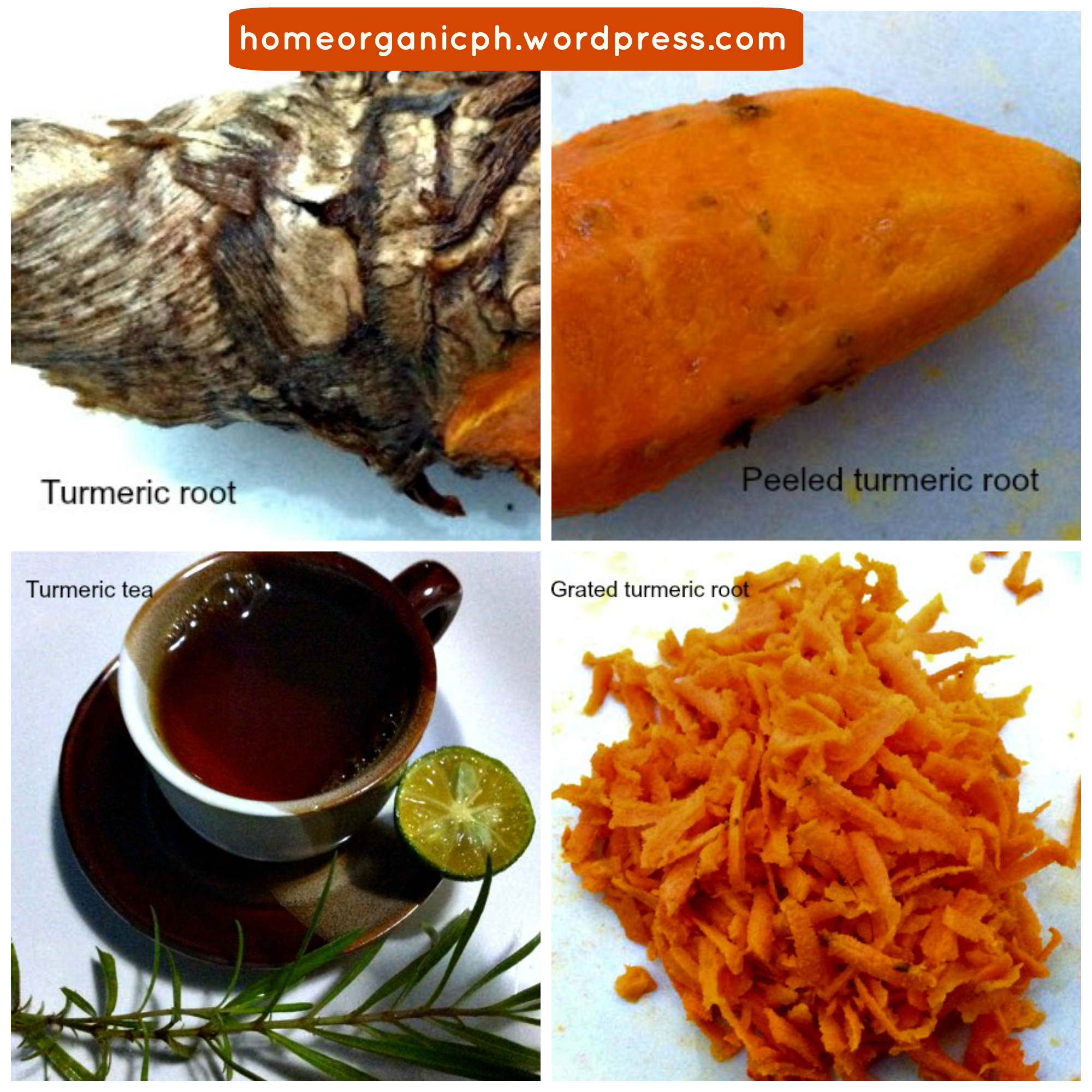
I know that fresh turmeric root is hard to come by in urbanized cities, especially in temperate regions, but when you have an opportunity, try to get some, and plant/use it. Fresh turmeric root tea tastes sooo good, and healthy, too!
In case you decide to plant turmeric, you may get the fresh turmeric rhizomes from Spicy World, with 4.5 stars score and 531 customer reviews. Kindly note disclosure on Amazon affiliate program.
Spicy World Turmeric Whole Raw Root, 1 Pound
Enjoy!
============================================================================







